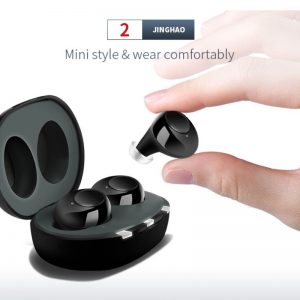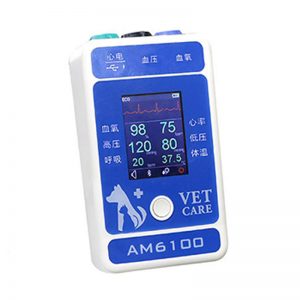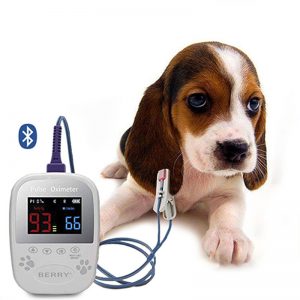
“In this article, I will try to explore the following questions: Why is understanding CPS so important to understand the future of the Internet of Things? What future blueprint does CPS paint? What ideas does CPS provide us with a deeper understanding and transformation of the physical world?
“
Introduction
In this article, I will try to explore the following questions: Why is understanding CPS so important to understand the future of the Internet of Things? What future blueprint does CPS paint? What ideas does CPS provide us with a deeper understanding and transformation of the physical world?
In multiple industrial links, the original development ideas for general-purpose chips obviously cannot meet the needs of the Internet of Everything. Therefore, the development of chips in different vertical fields for different scenarios has become a new “problem-solving method”, so you will see More and more IoT companies are developing their own chips with more optimized algorithms, lower power consumption and lower costs to meet the needs of specific scenarios such as smart homes, smart speakers, smart cameras, and autonomous vehicles.
In other words, the Internet of Things is not only a technology, it also brings a methodological change; further, it is a new way of thinking, giving us the opportunity to understand the physical world from an unprecedented angle and in an unprecedented way Transform the physical world.
If you take the Internet of Things as a new technology, you can develop some innovative hardware and solutions to leverage the tens of billions of markets; if you use the Internet of Things as a methodology, you can use it to transform traditional industries and processes, and leverage the hundreds of billions of markets; If you take the Internet of Things as a way of thinking, it is possible to change the way the entire physical world is connected, and it is more than a trillion-level market.
In order to understand the brand-new way of thinking of the Internet of Things in an authentic posture, there is a term I have to mention: CPS (Cyber-Physical Systems), which is translated in Chinese as “cyber-physical systems”.
The term CPS was first proposed by the National Science Foundation (NSF) in 2006, and the application of CPS has been explored in the fields of consumer electronics, energy, industry, public utilities, medical and health, etc., and then the United States has taken it as a new round of seizing the world. “Seed players” at the commanding heights of industry competition.
In 2013, Germany’s “Industry 4.0 Implementation Recommendations” made CPS the core technology of industry 4.0, and then focused on promoting manufacturing-oriented CPS, namely CPPS (Cyber Physical Production System).
All things have advantages and disadvantages. Industry 4.0 takes CPS as its core measure. On the one hand, CPS has received more widespread attention. On the other hand, it has also made some people mistakenly believe that CPS is only limited to the industrial field, and perhaps it is rigid. Impressions and misunderstandings don’t stop there.
Seeing this, your heart must be full of all kinds of questions. So in this article, I will try to explore the following questions:
Why is understanding CPS so important to understand the future of the Internet of Things?
What future blueprint does CPS paint?
What ideas does CPS provide us with a deeper understanding and transformation of the physical world?
The essence of CPS lies in the digital world
The undeniable fact is that the connotation and extension of CPS have been constantly changing, and a unified definition has not yet been formed.
Disassembling the term CPS includes both Cyber (digital world) and Physical (physical world). The first impression is that CPS is a “bridge” connecting the visible and invisible worlds. If you only understand CPS as a “bridge”, “bus”, or “system”, it would be too narrow and short-sighted.
The English Physical not only means “physics”, but also represents the objective laws behind physical entities. The National Science Foundation NSF’s interpretation of CPS is that the physical model of a system that operates according to natural rules or man-made rules is just one of the means to carry these rules. Other means include the surrounding environment, related elements, and machine communities.
The best explanation for CPS I have seen so far is that CPS focuses on connecting physical devices to the Internet, that is, connecting the devices to the Internet, so that the physical devices have five major functions such as computing, communication, precise control, remote coordination, and autonomy.
CPS is essentially a network with control attributes, but it is different from existing control systems. The three core elements of CPS include communication, computation and control. It is worth noting that CPS puts “communication” on the same level as “computation” and “control”, because in CPS In the emphasized distributed application system, the coordination between physical equipment clusters is inseparable from communication.
CPS’s control accuracy, remote coordination capabilities, autonomy capabilities, and the type and quantity of control objects of the internal equipment of the network, especially in the network scale, can be said to slap various existing networks.
In the new book “CPS New Generation Industrial Intelligence” written by Professor Li Jie of the University of Cincinnati, a living story in the movie “Eye in the Sky” was mentioned, which allows us to intuitively feel the CPS to a certain extent. Connotation.
“Eye in the Sky” is a war film that takes the drone anti-terrorist attack as the angle of cut. In the movie, the remotely piloted drone originally only needed to perform aerial surveillance missions, but when it was discovered that terrorists were about to engage in terrorist activities, they were changed to be targeted for removal missions. Because there is a little girl next to the target house, it is very likely that the little girl will be injured or killed during the mission. The conflict of the plot is that after calculation, the probability of the little girl being injured is very high, so the commander and the operator wander, dispute, and choose between innocent lives and valuable tasks.
In a scene in the movie, the analysts in the command center are constantly looking for the shooting point of the target house in order to minimize the risk of accidental injury to the little girl while hitting the elements. The birth of this subtle decision is based on the accurate assessment and prediction of the state and activities, covering the 3 core elements of CPS:
Communication: The UAV continuously transmits data on the ground and its own state to the control center, and control commands can also be transmitted to the UAV in real time.
Computation: The calculation here has a very clear purpose. The first is the ability to complete the task, that is, the success rate of choosing different aiming points to cause a fatal blow to the target; and the small size on the side of the house during the attack. Risk of casualties for girls.
Control: The UAV’s command center is set in Arizona, thousands of miles away from the target. The operator can realize all real operations of the pilot on the aircraft through the real-time control system RCS.
In the decision-making process of this example, the precise prediction and trade-off between the degree of completion of the target requirements and the price to be paid to achieve the target are the content and purpose of the calculation. Decision-making is not the ultimate goal, but the precise assessment and management of the impact of decision-making is the goal.
CPS models, predicts, optimizes and manages the rules of the entire physical world. CPS is not only a “bridge”, “bus”, or “system”, its essence lies in the creation of a digital world.
The more essential significance of CPS is that it may become an underlying thinking foundation for the interconnection of the Internet of Things and the transformation of the entire physical world. Just as the Internet has changed the interaction between people and the digital world, the Internet of Things with CPS as the core thinking will change the way people and things, things and things, and even the physical world and the digital world interact.
The 4 developmental generations of CPS
CPS is actually not complicated. To review many documents about CPS, to understand CPS, you only need to read two architecture diagrams.
In the past, our premise for solving known and visible problems was that the laws of change in the physical world were determined, and these laws could be recognized and simulated. The previous industrial revolutions were based on this way of thinking that the world is deterministic. Through continuous research on the objective laws of determinism, the bottleneck of productivity development was broken through time and time again, and human productivity was brought to a new level time and time again.
But this time, when we tried to bring each industry to a new stage through the original means, we found that it is not as simple as the problem of simply increasing productivity. Human beings’ cognition of themselves has a reasonable “fallback”, that is, if Failure to face the uncertainty of the real world will make it difficult to make breakthroughs. In the face of a changing world full of uncertainty, the original calculation foundation and way of thinking will be challenged. In order to deal with the uncertainty of the real world, it is necessary to fundamentally change the concept and method of system design, rather than simply transform the outside world, such as improving equipment performance.
From the perspective of the development stage, CPS is divided into four generations according to the level of intelligence and self-organization. We are currently in the process of evolving from the first generation to the second and third generations. The core of the industrial 4.0 is the second-generation CPS.
Generation 0 CPS: Closed physical systems and processes
The automation systems currently existing in various industries belong to this category. The 0th generation CPS has a closed loop of perception, control, execution and feedback. It is usually a closed system controlled by predefined logic or rules, and cannot be uncertain. Responsiveness to the changing environment and tasks.
The 0th generation CPS focuses more on functional design, solving known or visible problems, and the system uses the difference between expected and actual as the basis for negative feedback control. But in the real world, the environment and goals have great unknowns and uncertainties. These uncertainties come from the environment and tasks, as well as from the system itself. Therefore, the following evolution path of CPS is established.
The first generation of CPS: self-regulation and self-correction
In the first-generation CPS, the system architecture and default operation mode are defined and determined during the design phase of the scheme, and will not change during the entire system life cycle. The first-generation CPS has control functions and can adjust the parameters to the optimal level. In the case of system failures or changes in the surrounding environment, human intervention and adjustment are required.
The system can deal with some uncertainties of software or network, such as clock jitter in communication and calculation, packet loss in the network, resource call and conflict. However, the first-generation CPS is not an adaptive system and cannot predict the uncertainty accordingly.
Example: CNC machine tool.
The second generation of CPS: self-sensing and adaptive
The second-generation CPS can cope with changes in known modes. The system is designed with multiple alternative control modes in mind, and the CPS will run in the best mode during operation. The control mode and reasoning algorithm are pre-defined in the design stage and will not change during the entire system life cycle. Perception data from the system and the environment is used for CPS to switch between different operating modes.
Here, the self-perception of the CPS system is not equivalent to the self-perception of human psychology. The self-perception of CPS corresponds to the primary thinking functions in the human brain, including the assessment of the current state, the relationship between equipment and environment, and equipment and tasks. Relation recognition, judgment of the impact of different situations on the system, understanding of operations in a specific scenario, and contextual semantic recognition.
The self-perception of CPS constitutes a localized “system worldview”. The strength of this self-perception largely depends on the amount of information introduced and the range of available information.
Example: A flight control system operating in multiple modes.
The third generation of CPS: self-recognition and self-evolution
For the quasi-known changes, the third-generation CPS can deal with it. It is an agent that can grow on its own, and its value and ability will increase with the accumulation of use. CPS with self-learning ability can self-organize and self-adjust according to actual constraints within a predefined range.
Compared with self-perception, self-perception is a more advanced cognitive model that requires a combination of various experiences and knowledge to make appropriate inferences about unfamiliar situations. Self-awareness has different methods and purposes at different application levels such as component level, stand-alone level, and system level. From self-perception to self-cognition, it reflects the improvement of the level of intelligence, and also reflects the expansion of the scope of intelligence from local to global. Self-awareness allows CPS to establish an effective model for the physical world under certain circumstances, and self-awareness allows CPS to establish multiple models of the physical world from multiple different perspectives. Self-cognition itself has a certain degree of uncertainty. Different scenarios and contexts may allow the system to propose multiple models from different perspectives.
Self-evolution is manifested as the ability of CPS to develop from a stable state to a new stable state in order to respond to changes in needs, tasks, goals, and environments. At present, in the design stage, it is becoming more and more difficult to fully predict various operating scenarios and functions. Therefore, it is very urgent to make CPS have the ability of self-evolution. The current various systems are far from reaching the expected level of self-evolution.
Example: Self-learning robot.
4th generation CPS: self-awareness and self-replication
The 4th generation CPS can deal with unknown changes, and people no longer have to participate in the control process. At present, there is no clear definition for the fourth-generation CPS. The comprehensive realization of system intelligence, including machine perception, context perception, machine learning, autonomous cognition and other abilities, is considered to be the main difference between the third generation and the fourth generation of CPS.
There are many disputes between different institutions and organizations as to what is intelligence, what is system intelligence, and how to rate the level of intelligence. There may also be no definite answers.
Two interleaved calculation cycles in CPS
The current Internet of Things solutions are generally in the stage of advancing to the second-generation CPS, where two intertwined computing cycles are formed:
1.Basic cycle: including the closed loop from sensing à monitoring à decision à reasoning à planning à execution à utility
2.Enhancement cycle: including the closed loop from reasoning→learning→adaptation→evolution
In the basic cycle, the physical world is refined into digital models, and each model is refined based on “equipment portraits” or “object models.” The device portrait forms a standard data of the device dimension, which can further analyze the configuration used in different scenarios to achieve the reuse of knowledge.
Through the management of device portraits and physical models, enterprises continue to obtain desired information from device IoT data to help improve business accuracy. It can help companies realize the precipitation of data assets, build data-driven business capabilities, and accurately predict and build device feature libraries.
In the basic cycle, driven by the model, it will change in ever-changing situations.
In the enhancement cycle, taking into account the uncertainty and variability of the real world, the inference model derived through deep learning adaptively adjusts the basic model, thereby forming a CPS with non-deterministic characteristics. Give CPS a certain degree of freedom to enhance its ability to adapt to different tasks, environments and scenarios.
The intelligence of CPS largely depends on the reasoning mechanism, which perceives and predicts changes and uncertainties in the environment, and evaluates and predicts changes in its own state and risk factors.
In the enhancement cycle, it is driven by rules to adapt to changes.
So far, through the description of the four generations and two cycles of CPS, supplemented by two pictures, I will present the latest progress on CPS in front of you.
This article is different from the usual, we reveal the future development of the Internet of Things from the perspective of methodology and way of thinking. CPS, which puts “communication”, “computation” and “control” in the same position, is worth spending time and careful consideration. Mastering it will allow us to better understand and “control” the real physical world full of uncertainties. , It may also change the way we get along with the physical world.
Finally, I sincerely thank Ding Xianfeng, the chief scientist of Alibaba Smart Internet, for his support to me during the writing process.
Summary of this article:
1. The Internet of Things is not only a technology but a technology. It is more like a methodology and a way of thinking. It gives us the opportunity to understand and transform the physical world from an unprecedented perspective.
2. CPS focuses on connecting physical devices to the Internet, that is, connecting the devices to the Internet, so that the physical devices have five major functions such as computing, communication, precise control, remote coordination, and autonomy.
3. The essential meaning of CPS is that it is the underlying thinking foundation for the interconnection of the Internet of Things and the transformation of the entire physical world. Just as the Internet has changed the interaction between people and the digital world, the Internet of Things with CPS as the core thinking will change the way people and things, things and things, and even the physical world and the digital world interact.
The Links: SKKT570-16E FF600R12KL4C













